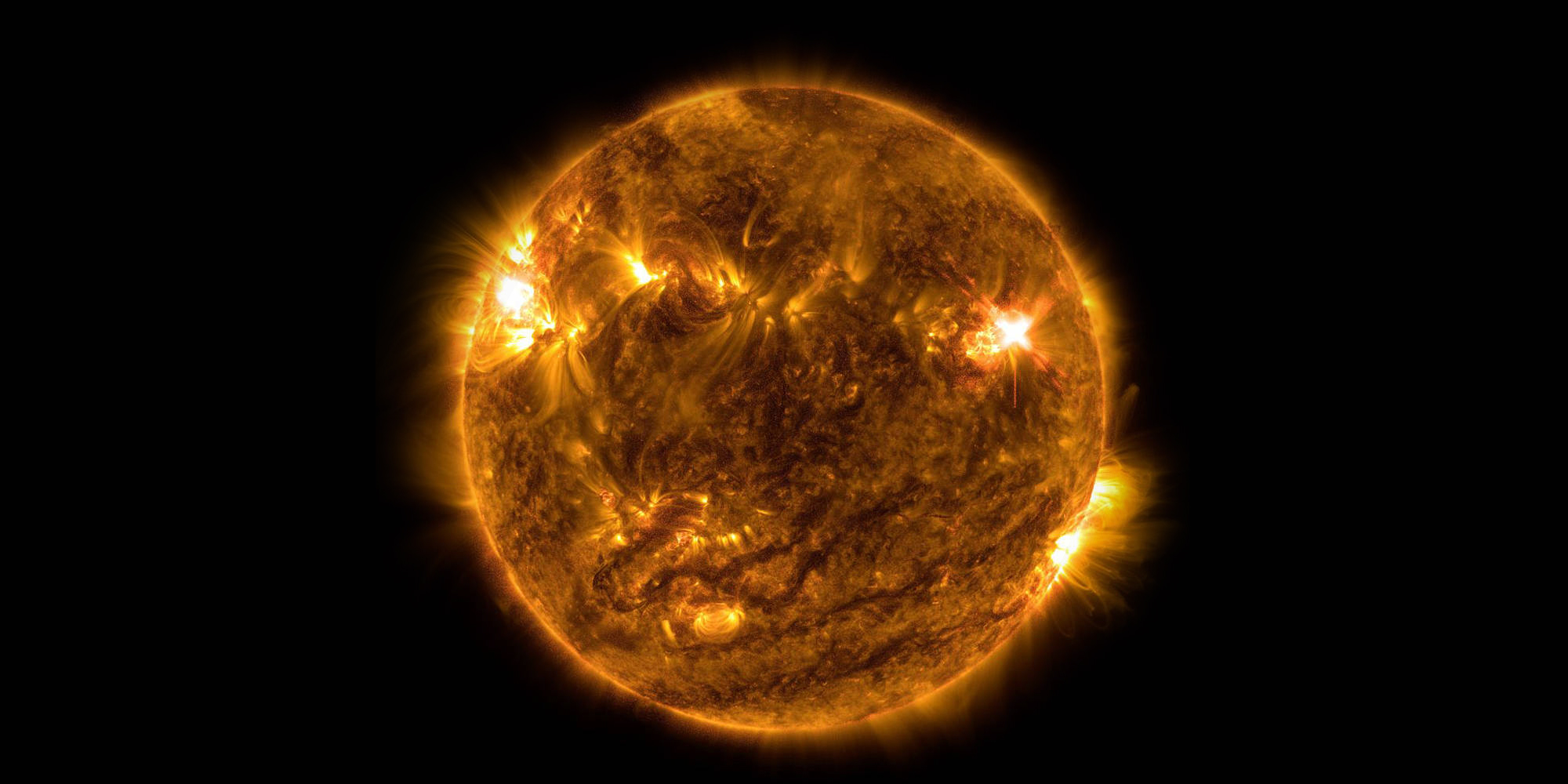Space weather is caused by four main components: solar flares, coronal mass ejections (CMEs), high-speed solar wind and solar energetic particles. The concept of space weather refers to the effects that the sun has on the Earth and the planets of the solar system.
The Sun has an 11-year cycle and space weather is governed by this solar cycle, allowing experts to predict, at some level, when effects are likely to be most severe.
This next “solar maximum” is likely to occur between 2024 and 2026.
However, significant weather events can happen outside such predicted time frames — there was a massive flare on 5 January this year, for example.
 Dr Mpho Tshisaphungo, South African National Space Agency Space Weather Lead. (Photo: Sansa)
Dr Mpho Tshisaphungo, South African National Space Agency Space Weather Lead. (Photo: Sansa)
The Space Weather Centre launched in November last year in Hermanus has eight full-time dedicated space weather forecasters, seven of whom are women.
Dr Lee-Anne McKinnell, managing director at the South African National Space Agency (Sansa) in Hermanus, says space weather is becoming so important “it should actually be included with the daily weather forecasts”.
GPS and electrical power
McKinnell explains that all GPS systems are affected by space weather, and if space weather is factored into planning, it is possible, for example, to reroute aircraft to have them fly at a lower altitude.
Electrical power is specifically sensitive to space weather, and with warnings, one can redirect it. Space weather can cause problems such as corrosion on pipelines and lead to incorrect signal settings on railways. Drones can be knocked off course.
There are means to mitigate the effects in important operational areas, McKinnell notes, but they also require keeping backup systems, which adds to operational costs.
Despite the added effort and cost, she says, “we need to start thinking about the Sun when we plan”.
The centre issues a daily general bulletin to all its clients and, depending on the industry-specific warnings, via a subscription service. This is increasingly in demand for anyone who relies on communication, navigation and transport.
The four factors
McKinnell explains there are four events that can have an impact on Earth:
A solar flare is an eruption of matter on the surface of the Sun which is accompanied by an emission of electromagnetic energy in the form of gamma rays and X-rays. The biggest flares can be hundreds of times the size of the Earth. Flares are grouped in five classes (A, B, C, M and X).
Each class of flare is 10 times more powerful than the previous, with A-class flares being the weakest and X-class flares being the most energetic.
The electromagnetic energy of a solar flare takes about eight minutes to arrive on Earth, and its effects may last for a few hours. Effects include interference in radio and satellite communication, high-frequency radio blackouts and GPS errors.
Coronal mass ejections (CMEs) travel at speeds of up to 2,000km per second..
A CME is a massive cloud of hydrogen ions that erupt from the surface of the Sun when stored energy is suddenly released. The impact of a CME causes a disturbance to the Earth’s magnetic field and can interrupt communication and navigation systems.
CMEs take roughly one to four days to arrive on Earth and their effects may last for a few days, including geomagnetic storms, high-frequency radio blackouts, disturbances to power grids and long-distance pipelines, GPS errors and satellite anomalies.
Solar energetic particles (SEPs) are high-energy charged particles originating from energised solar flare sites or from shock waves associated with CMEs. They are of particular interest and importance as they can endanger the lives (of astronauts) and technological systems in outer space.
SEPs travel between 15 minutes and a few hours on their journey to Earth and their effects may last for a few days. They include satellite anomalies, radiation risk to high latitude flights and astronauts, radio blackouts and glitches to avionics.
Space weather storms present in two ways: A geomagnetic storm is a temporary disturbance of the earth’s magnetic field caused by sudden strong variations in the speed, density and magnetic properties of the solar wind.
Solar activity such as solar flares and coronal mass ejections may lead to turbulence in the ionosphere known as ionospheric storms. DM/OBP




 Dr Mpho Tshisaphungo, SANSA Space Weather Lead. (Photo: SANSA)
Dr Mpho Tshisaphungo, SANSA Space Weather Lead. (Photo: SANSA)